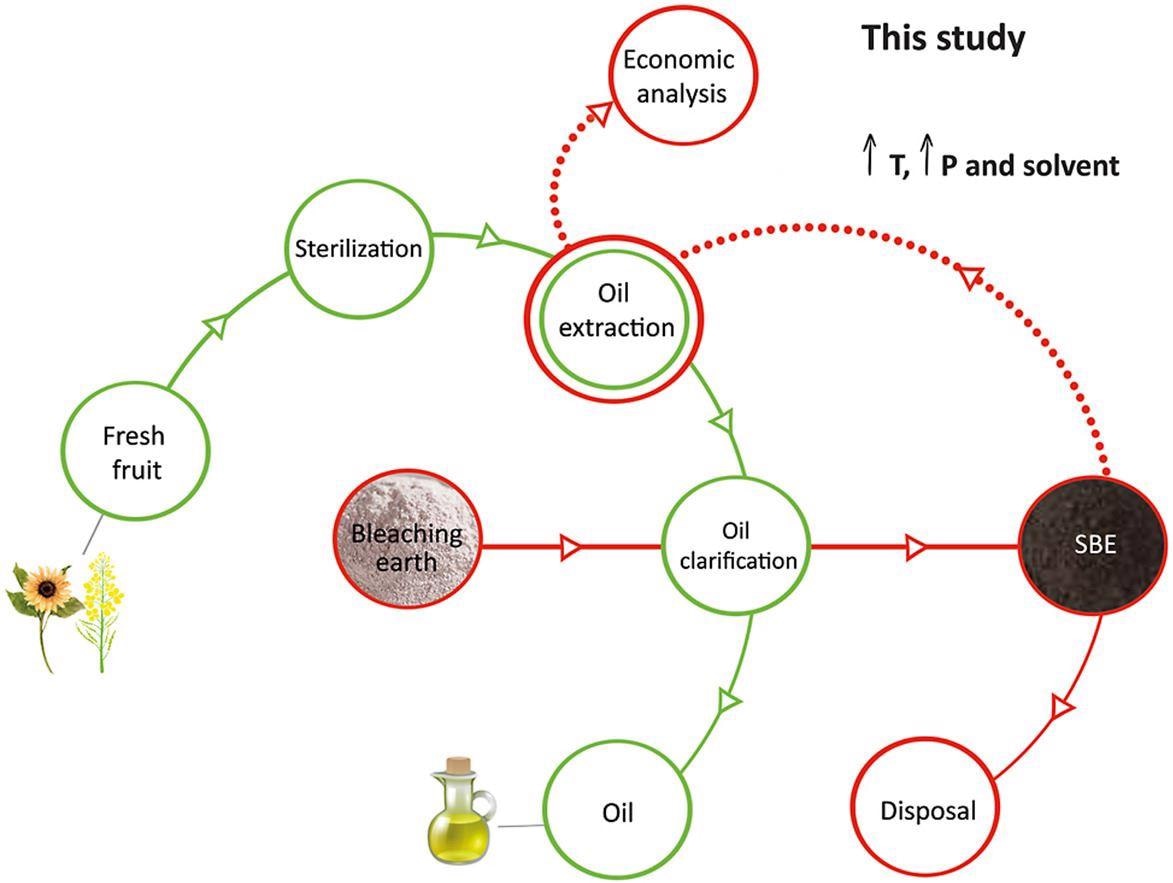A recent paper published in the journal Cleaner Engineering and Technology investigated spent bleaching earth as an energy source while factoring in the economic viability of various methods of conversion. While previous studies suggest SBE could be used in its solid form as a fuel, its high ash content and residual waste would still present some of the same SBE waste issues.

Study: Economic analysis of waste minimisation and energy recovery from spent bleaching earth, Cleaner Engineering and Technology. Image Credit: Low, A et al., Cleaner Engineering and Technology.
Spent bleaching earth (SBE) is a solid waste as a result of the bleaching process in the edible oil industry. Generally, this solid waste is disposed of directly in landfills without treatment, which causes severe water and air pollution. SBE is the largest contributor to the solid waste that is produced in edible oil refining processes.
Bleaching Earth
Bleaching earths are typically used throughout the refining process of vegetable oils and animal fats to make them suitable for human consumption. This compound is categorized as a ‘montmorillonite’, which is a form of powdered clay known for its absorption capacity.
As it removes the impurities and unwanted matter, including soaps, proteins, coloring substances, etc., the bleaching earth becomes unstable and tends to explode or combust easily. Therefore, not only is spent bleaching earth considered to be an environmental pollutant, it is classified as hazardous waste and as a result there is much conjecture about how to dispose/reuse this volatile waste byproduct.
Extraction of residual oils for use as a fuel is probably the most economically attractive option as the oil-free SBE could potentially be regenerated and recycled back into the oil bleaching process
Rashid Shamsuddin, Department of Chemical Engineering, University Teknologi Petronas, Malaysia
While the properties of SBE vary depending on its source and the kind of oil it has been used to process, it generally contains high concentrations of residual oil. This residual oil could be considered a useful resource and is attracting the attention of researchers who want to make the use of bleaching earth a more sustainable practice in the edible oil refining industry.
“Utilising SBE or the residual oil in SBE for production of biodiesel, biofertilizer, fuel briquettes and non-fired wall tiles could reduce the waste generated by the edible oil refining industry and improve its sustainability,” states Shamsuddin.
Extracting Residual Oils
To utilize the energy in the residual oils contained in spent bleaching earth, various methods were analyzed by the team. Amongst these, they evaluated the potential of using the extracted oil as a fuel that had been converted to biodiesel.
Biodiesel could be used for energy generation and presents an economically attractive option as there is also potential to then reuse the oil-free SBE in oil refining processes, which in the long term creates better sustainability practices.
Amongst the options for extracting the oil for conversion into biodiesel are pressurized treatments using carbon dioxide or water, steam extraction, and solvent extraction: “The regenerated bleaching earth has reported bleaching efficiencies of between 90-100% when compared to pristine bleaching earth,” says Shamsuddin.
Out of the various extraction processes, the most economically viable was the use of solvents such as methanol, acetone, and hexane. To extract the oil, the solvent is introduced to SBE in a mixing tank and filtered to separate the solvent mixture that contains the oil from the de-oiled SBE.
The oil is subsequently extracted from the solvent via distillation, and the solvent can then be reused. However, one of the major drawbacks of this process is that the solvents are also considered hazardous materials and are difficult to work with.
Yet, despite the hazardous nature of the solvents, the separation of the oil from the solvent mixture through distillation shows promise if scaled-up sufficiently as it is thought to be an efficient process.
Economic Viability
While the researchers explain their methods in detail in the paper, they reveal that acetone extraction was considered to be the most well-suited to extracting residual oils from spent bleaching earth when compared to hot water and methanol. The process minimized waste and demonstrated good energy recovery.
The researchers also state for the process to be economically viable the operation needs to be performed on a large scale as the process might not justify the costs for an individual edible oil processing facility. “If larger amounts of SBE were being generated or a centralized dedicated facility was built to handle SBE from several facilities, then this process could become more economically viable,” explains Shamsuddin.
Therefore, while there is potential to recover contaminated oil from spent bleaching earth for conversion into biofuels, more work and research is needed to either make the process suitable for smaller-scale operations, or provide alternative solutions such as centralized facilities to make it economically viable.
References
Low, A., Shamsuddin, R., Siyal, A.A., Economic analysis of waste minimisation and energy recovery from spent bleaching earth, Cleaner Engineering and Technology (2022), doi: https://www.sciencedirect.com/science/article/pii/S2666790822000234?via%3Dihub
Disclaimer: The views expressed here are those of the author expressed in their private capacity and do not necessarily represent the views of AZoM.com Limited T/A AZoNetwork the owner and operator of this website. This disclaimer forms part of the Terms and conditions of use of this website.
Article Revisions
- Jan 6 2025 - Meta Description has been updated to fall inline with Google recommendations and a malformed link has been repaired.